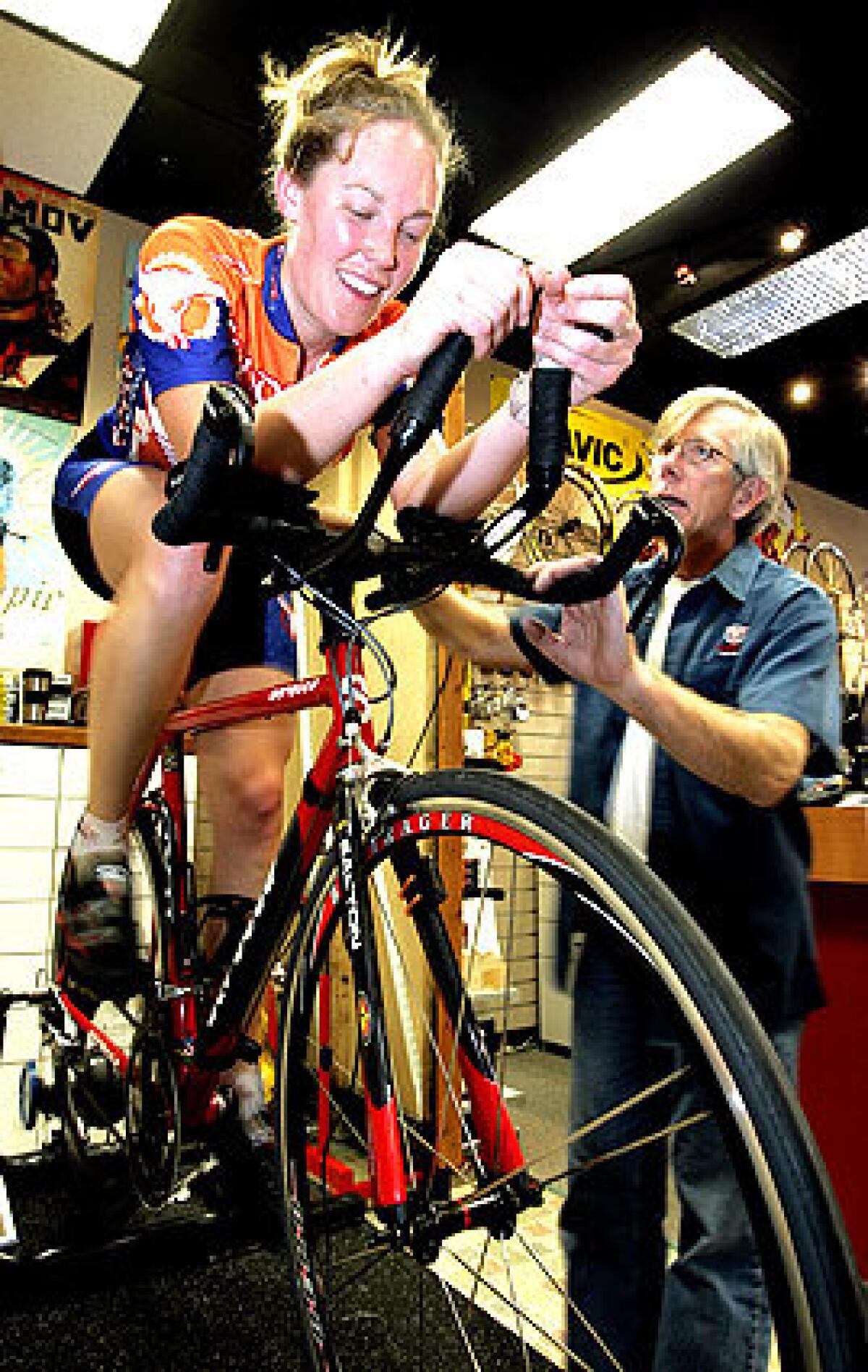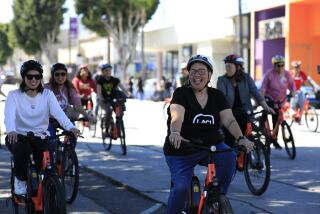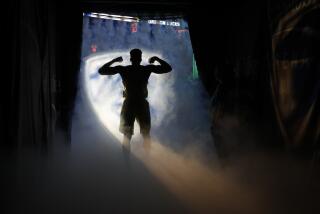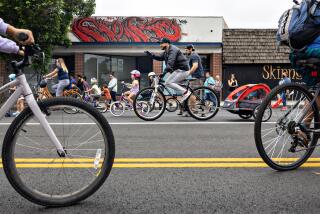For a bike and body in sync

SWEAT glistens on 24-year-old triathlete Lauren Robertson’s forehead as she pedals a bicycle hooked up to a computer measuring her power output. As Ashton Johnson, co-owner of Sundance Cycles in Agoura Hills, adjusts the seat and handlebar height on Robertson’s bike, the computer gives direct feedback on how changes affect pedaling power.
Together they find that raising Robertson’s seat height increases her power output and lowering the handlebars improves aerodynamics and helps recruit more muscles for pedaling.
Riding as efficiently as possible may be important for competitive cyclists such as Robertson, but less-intense riders can benefit from expert analysis as well. They need a comfortable bike that lets them avoid overuse injuries -- and get more pleasure out of riding.
For them, a well-fitting bike, not necessarily a custom-built one, will do, say bike fit experts. Cyclists without unusually long legs or torsos can find less expensive stock bikes that can be adjusted for a good fit.
But even fitting a stock bike takes more than the old-school fit session in which a bike shop employee watches a customer ride around the parking lot and then adjusts the seat height.
Pro bicycle racer Nate Loyal says people who ride more than two days a week on a regular basis should get a professional bike fit.
“The main focus I always have with any fit, whether you’re a first-time rider or a professional, is injury prevention, then comfort, efficiency and last is power,” he says. Increased power and fitness will come naturally if riders avoid injuries and are more comfortable on their bikes, he says, because they’ll spend more time riding.
Loyal, who does bike fitting at Helen’s Cycles in Santa Monica, checks and adjusts seat height, angle and position, bar height and reach and the cleat alignment on the customer’s cycling shoes in a session that takes about an hour and costs $165. A more comprehensive fit session that looks at pedaling efficiency costs $290. Other fitters in Southern California charge similar rates.
Andy Pruitt, a sports medicine consultant to the U.S. Cycling Federation, says he backed into the bike fit business 30 years ago when he was working to help treat cyclists’ overuse injuries. Because cycling is a sport of repetition -- a 100-mile ride might require 32,400 pedal strokes by each leg -- a minor misfit can create major problems over time, Pruitt says.
Overuse injures from riding a poorly fitting bike can include patellar tendinitis, chondromalacia (degeneration of the cartilage behind the kneecap), lower back pain, saddle sores, iliotibial band friction syndrome (a form of bursitis) and erectile dysfunction (in males, obviously).
Co-author of “Andy Pruitt’s Complete Medical Guide for Cyclists,” which devotes 40 pages to bike fit, Pruitt has developed a computerized system to determine bike fit variables and help prevent such injuries. At his offices at the Boulder Center for Sports Medicine in Colorado, Pruitt attaches reflective markers to anatomical landmarks such as a rider’s knees, ankles and hips. The cyclist then pedals on a trainer while motion-capture hardware and software create an animated 3-D stick figure that reveals problems in the cyclist’s pedaling motion and suggests how fit should be adjusted.
Such high-end sessions are expensive, costing about $400, but may be covered by health insurance, Pruitt says, if they are used to treat a cycling-related injury.
For those without special problems or injuries, a standard fit session at a bike shop can produce a more comfortable ride, although customers should ask about the qualifications and experience of the fitter -- they aren’t licensed and many are self-taught.
One organization, the Serotta International Cycling Institute in upstate New York, provides formal training for bike fitters. The school offers classes and clinics to teach bike shop staff how to fit customers on stock bikes and custom bikes. The school’s three-day classes cover functional anatomy for cyclists, the biomechanics of cycling, correct posture on a bike and cycling aerodynamics.
Students learn how to evaluate riders’ flexibility and take a cycling history. They participate in hands-on fitting sessions, including being fitted and fitting other students.
Although originally designed to help dealers fit customers for Serotta custom bikes, the school’s goal now is to teach bike shop employees how to position riders comfortably in a way that optimizes muscle action, minimizes aerodynamic drag and reduces risk of injury, whether on a stock or custom bike.
Improving comfort and avoiding injury is an important goal of fit sessions, but Sundance Cycles co-owner Steve Dozier says that they also can also be an opportunity to help riders learn how to correctly pedal a bike -- something that most people never learn.
“Once their parents let go of the bike and they can pedal the bike on their own, that’s all the information kids get on how to pedal,” says Dozier. “Part of what we do during a fitting is coach people on how to sit on the bike, which muscles to use, how to use them when pedaling.”
The result of a good fit session is better pedaling style and a better fitting bike.
“It’s like buying shoes,” says Dozier. “You’ve got to get the right size or it’s not going to work for you.”
More to Read
Start your day right
Sign up for Essential California for news, features and recommendations from the L.A. Times and beyond in your inbox six days a week.
You may occasionally receive promotional content from the Los Angeles Times.






